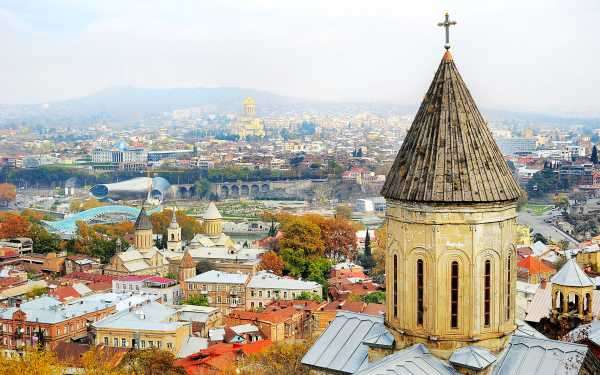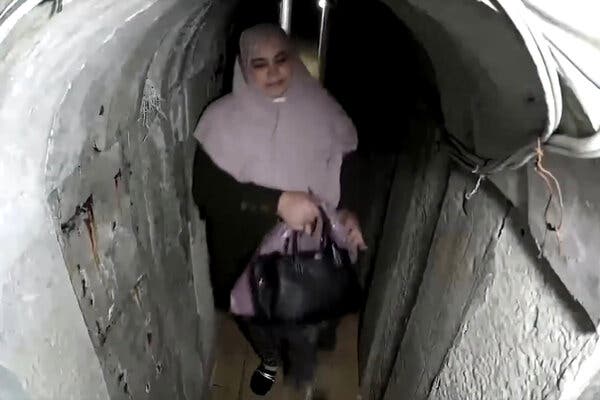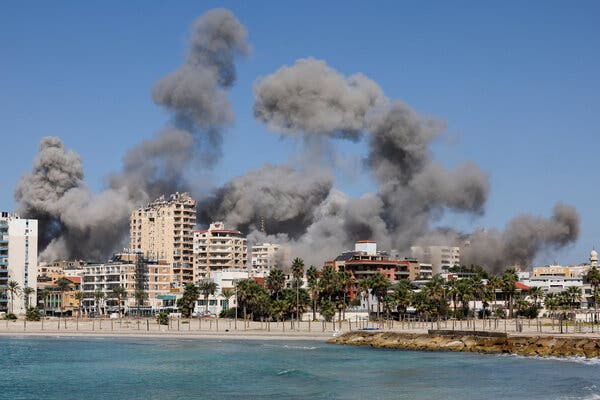
July 2021 was marked as the hottest month of the year in Tbilisi, Georgia. While the temperature outside hit around 33˚C at 10 am on July 5, the day when the pro-LGBTQI+ “March of Dignity” was scheduled to take place, it was a counterprotest by conservative and radical-right actors that spilled onto the streets instead. Demonstrators appeared with national flags, some holding Christian crosses and prayer books, others wearing traditional cloaks or headscarves.
The demonstration has shone a spotlight on the ongoing battle over the power to define the country’s national identity vis-à-vis the West as well as the very essence of populist politics: Who is “us” (the people) and who is “them” (the traitors)?
Remember, Remember: Guy Fawkes’ Co-opting by the Far Right
READ MORE
July 5 marked another hiccup in Georgia’s route toward democratization, not only because of the violence, attacks on the media and homophobia, but also because of the disagreements over the fundamental concepts and principles of democracy or of “Georgianness” that remain unresolved on the 30th anniversary of the country’s independence.
Several days later, the death of a reporter who was attacked while covering the LGBTQI+ march shook the country. Perhaps, in a paradoxical way, July 5 might turn out to be “the moment of awakening for Georgian people.” For which “people,” however, remains yet to be decided.
Alternative Georgias
The first attempt to demonstrate in favor of LGBTQI+ rights in Tbilisi on May 17, 2013, was met with a harsh reaction. Back then, state structures were blamed for an “ineffective response” to protect the activists from violent attacks. Once the “March of Dignity” was scheduled for July 5, 2021, the radical right launched its countermobilization with the leading narrative to “demonstrate the power of the majority” by preventing the march from taking place.
The mobilization, which took place mainly on the Telegram messenger, was not only built on populist appeal but was also legitimized via concepts such as freedom of expression and religion, and, of course, democracy. Alt-Info, a formal broadcaster and an anti-liberal, far-right group affiliated with the organization Alternative for Georgia, was the main organizer of the event. It had moved to Telegram after several Facebook takedowns yet maintained its presence via different accounts and active groups on Facebook.
Embed from Getty Images
From the beginning of the campaign, radical-right actors had consistently been trying to establish their interpretation of the ideas, events and concepts of Georgianness. In this context, Tbilisi Pride became associated with a fully-fledged attack on Georgian values and on its defining attribute — Christian identity. According to this narrative, on the other side of this confrontation was the liberal segment of the country that endorsed the West and its imposition of power and decadent values over Georgia.
The local “traitors” were linked to the EU, which was repeatedly accused of not only endorsing the “March for Dignity” but also for promising extended rights to the LGBTQI+ community. In this way, even prior to July 5, two confronting camps were discursively constructed by the radical right: Georgian people, who allegedly want to adhere to Christian traditions (also labeled as “the majority”) and “the liberal minority,” who ostensibly violate democratic principles and align with foreign powers.
It is noteworthy that religion was not only invoked by members of the organizing team, but that representatives of the Georgian Orthodox Church had also successfully used social media to take part in mobilizing the counterdemonstration.
Us and Them
On the afternoon of July 5, the area opposite the national parliament building in Tbilisi was only formally accessible for observers and reporters as it started to look like the demonstration would overtake the public space. The speeches began: “Let’s start with why are we here: Georgians, isn’t this country ours?!”
Just a couple of hours later, the organizers announced the following: “do not let them [journalists] inside — especially the representatives of these liberal media should stay outside.” The antagonism was openly created through othering (“them”) and distancing (“inside”) language that would simultaneously accentuate the in-group coherence: “we should distinguish ‘us’ and ‘them’ — who is with us and who is with them.”
Embed from Getty Images
While the protest initially formed over the issue of the “March of Dignity,” during the actual demonstration several topics and actors were discursively connected in a sort of “chain of equivalence”: (liberal) journalists, the EU, foreign embassies and local politicians on the one hand, and the Christian church and ethics, ordinary people (“the majority”), traditional values and the issue of sovereignty on the other. These phenomena were (re)contextualized through interpreting ideas of democracy, freedom of expression and constitutional principles.
Once the decision was made to cancel Tbilisi Pride due to the expected danger of violent clashes, the victorious “We reclaimed Rustaveli today! This country is not theirs, it’s ours!” was heard at the demonstration. Even before this, while reclaiming the public space, the demonstrators indicated the need to “reclaim” the constitution and rule over the country: “we have neoliberal totalitarianism … where those providing external finances are occupying and ruling the country” followed by the often-repeated pronouncement: “In Georgia, there will be our [Christian Georgian] rule.”
In this narrative, historical occurrences were recalled to create an imaginary picture of the present with symbolic and emotional connotations from the past: “Just like during the [1121] Didgori battle when we were also attacked by the coalitional powers, nowadays we shall win!” Several days later, the same actors held another demonstration where this point was reiterated in a populist manner: “The Georgian nation’s patron is not the embassies or politicians in this building [the parliament], but the Georgian nation itself.”
A Different Face of Europe
Besides the populist appeal to sovereignty, the ideas of democracy and Georgianness were the main concepts being redefined by the speakers. Interestingly, the above-mentioned narrative was entangled with the story of democracy and external, European references: “democracy is here, now in this street. … So Mr. prime minister, if you are the minister of this people and not of Kelly Degnan (US ambassador to Georgia), then adopt the same anti-LGBT law as in Hungary.”
The activists carried Hungarian flags and a photo of Hungary’s prime minister, Viktor Orban, as an example of an exemplary leader from a European context: “As in Hungary, an EU country, we want a similar anti-LGBT law.” Orban has been a point of positive reference for the radical right in Georgia for several years now, enabling it to recontextualize a “different face of Europe.”
After several speeches, the leaders asked their supporters to turn to the Kashueti Church behind them. A Christian cross made from metal was bought and erected by the demonstration leaders in front of the parliament as a symbolic demand to rule “according to Christian ethics.” This unprecedented installation was accompanied by praying and the statement that “The essence, the past, present and future of Georgia is St. Nino’s cross. Without this, there is no Georgianness.”
The cross was attributed with not only religious, but more importantly political connotations, inserting it into the antagonistic discourse and interpreting constitutional principles through it: “this cross means the end/defeat of liberalism in Georgia,” “our constitutional bodies should be led by Christian values from now on — this is what this cross symbolizes” and “The nation’s desire was revealed when this cross was erected here.”
In parallel with the praying, people danced to traditional music in the middle of Tbilisi’s central street, Rustaveli Avenue. The dance was interrupted several times with the chant “Georgia is ours!” In the meantime, journalists became the first victims of the heated emotions of the protesters, who violently carried out the discursive antagonism pitched by the leaders.
Whenever referring to Georgianness, the demonstrators incorporated Christianity as an inseparable element of it: “no one will ever win the fight with God. And the fight with the Georgian people means the fight with God.”
Embed from Getty Images
July 5 was followed by another wave of protests, with other parts of society willing to “correct” understandings of the meaning of liberty, democracy and freedom of expression. Together with anti-violence and solidarity posters, the demonstrators put their own claims regarding their country’s identity forward.
The deep polarization in Georgia is not only political or economic but also largely symbolic and identitarian. Even the meaning of July 5 is contested in Georgian society. While the radical right and its supporters claim that “the world should get to know us by what was happening here on 5th of July” and that “this is the Georgian pride and we do not have to apologize to anybody,” another part of Georgian society deemed it a shameful and hateful day for the country.
Thus, the way in which the fundamental concepts of democracy, national identity and freedom are defined will continue to affect the future democratization of Georgia.
*[Fair Observer is a media partner of the Centre for Analysis of the Radical Right.]
Source: fairobserver.com



